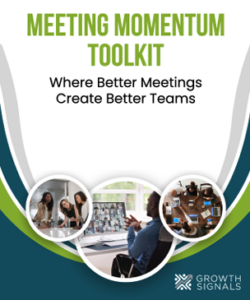With over 40% of desk-based workers in the US and UK reporting feelings of burnout, it’s likely that you or a colleague are dealing with this issue right now.
The word “burnout” is used in many circumstances, such as burnout from work, family, and social responsibilities. It’s even used among neurodivergent and disabled folks, with acknowledgment of the barriers these communities face every day becoming more and more widespread.
While all these are valid kinds of burnout, we’re going to focus on burnout in the workplace. We’ll cover a basic definition of burnout, the five stages of burnout, and what you can do to help your team work through and avoid burnout.
What Is Burnout?
Burnout is an experience of prolonged distress that leads to feelings of disengagement, negativity, and exhaustion. While personal health factors can contribute to the development of burnout, the environment also plays a major role in either protecting individuals from or leaving them vulnerable to burnout.
How is burnout different from everyday stress? First, stress is usually limited in duration and attached to a specific project, event, or other outcome. Once the deadline passes, the physical or mental stress fades as well.
There are also different kinds of stress, and up to a certain point, stress can even be good for an individual’s performance! Burnout, on the other hand, is never good for anyone’s work or well-being, with only negative effects resulting from this emotional state.
Stage 1: Honeymoon Phase
When employees first start working with a new organization or in a new position, their days are filled with learning new things and meeting people. They will likely feel challenged with new tasks while being supported by their supervisor and training team. This is when they have their rose-colored glasses on.
An employee may experience the following things at this stage:
- High energy and creativity
- Positive outlook at work
- Flow state
- General job satisfaction
Stage 2: Onset of Stress
As they get accustomed to their position and the day-to-day flow of the work, an employee will likely be given more responsibilities and left to their own devices. As they take on a greater share of the workload, there will be days when they feel stressed. Over time, this feeling will become more frequent, until the individual has more high-stress than low-stress days.
They’ll start to feel consistently tired throughout the day, and their motivation may dip. Sustained focus on their work may become more difficult to access than it used to be.
Stage 3: Chronic Stress
When stress becomes a constant part of an employee’s workday, they’ve entered the phase of chronic stress. Their negative feelings may develop into anxiety and panic on a routine basis, and they might find themselves leaving work until the last minute or unable to complete their work at all.
Negative emotional states like anger, irritability, depression, overwhelm, and fatigue are all common at this stage.
Stage 4: Burnout
In burnout, an employee may appear to be completely disengaged from the outside. On the inside, they’re probably experiencing a host of negative emotional and physical symptoms, including:
- Stomachaches or headaches
- Extreme fatigue and exhaustion
- Social isolation
- Lack of desire for activities that used to bring them joy
Stage 5: Habitual Burnout
Finally, habitual burnout is when an individual starts to believe that the feelings they are experiencing are normal and accepts them as “just the way it is.” Left unchecked for too long, habitual burnout can lead to lifelong health consequences, including high blood pressure, depression, anxiety, and an impacted immune system.
Helping Your Team Avoid Burnout
It’s not hard to see why it’s in your best interest to keep your employees from experiencing burnout. There’s a lot of advice about overcoming burnout geared toward individuals, such as:
- Creating and enforcing boundaries between work and personal life
- Taking frequent breaks throughout the workday
- Maintaining a healthy diet and exercise routine
- Prioritizing self-care
- Disconnecting completely on the weekends
But what can you do as a leader in an organization to build a space where employee burnout doesn’t happen in the first place? Try implementing some of these strategies in your workplace to build a more resilient team and avoid employee burnout.
Acknowledge Where You Are and Confront Confirmation Bias
Have you heard of Newton’s First Law of Motion? “A body at rest will stay at rest unless acted upon by an outside force.” In other words, change won’t happen unless it’s forced by external pressure.
No change can happen until a majority of folks in your workplace acknowledge that there is something worth changing. Start by having frank conversations with the leaders in your organization and among your peers to determine whether burnout is an issue in your community and how it’s affecting your teammates. You might start to see that the reasons to change outweigh the reasons to stay the same.
While doing this work, you’ll have to fight a mighty foe: confirmation bias. Confirmation bias occurs when you believe something to be true and therefore only take in information that confirms this initial bias. For example, if you believe that you have the best workplace on Earth, your brain is hardwired to only seek out and retain information that confirms this belief.
It will be difficult but important work to overcome your own confirmation bias and the confirmation bias of others to get an accurate reading of the current state of your workplace. Roundtables and anonymous surveys can both be useful tools for gathering honest feedback from your employees.
Examine Your Workplace Culture
As you have these conversations with the people in your organization, you’ll start to build a picture of your overall workplace culture. Do your employees feel encouraged to take breaks throughout the day, and what do they do when they feel they need a more prolonged period of rest? How is employee morale, and what are your turnover rates?
If any of the answers to these questions are suboptimal, employee burnout is likely at least one cause of these common cultural concerns.
Communication style plays a big part in determining your workplace culture and helping your employees avoid burnout. If an employee is able to frankly discuss their emotional state with a supervisor before they reach chronic burnout, they’re much more likely to get the help they need to avoid long-term health and productivity consequences.
All this work is moving you toward building a workplace that promotes psychological safety. In psychologically safe spaces, teammates feel supported in their work, safe to make mistakes, and encouraged to show up as their full selves.
To achieve this, you’ll need to support your managers as well as your employees. After all, if managers don’t feel equipped to support their direct reports about their mental and emotional well-being, how can they successfully support those employees through burnout? Giving your management team access to training that helps them build their socio-emotional skills can go a long way toward alleviating burnout in your workplace.
Engage in Appropriate Goal-Setting
Another common cause of burnout is setting too high of an expectation. Yes, it’s true that setting stretch goals can boost employee performance and motivate your team to achieve more than they thought they could. After all, this is the governing principle behind the OKR goal-setting strategy used at many large companies, including Google, Amazon, and others.
However, these goals still need to be achievable. Just because your goals shouldn’t be met 100% of the time, that doesn’t mean that they should never be met.
Check that supervisors are creating goals in tandem with their employees and that these goals are revisited over time. Allow employees to adjust their goals as needed to make them challenging but realistic.
Improve Employee Autonomy
Employees need autonomy to feel empowered and engaged at work. Without autonomy, individuals quickly become disinterested and unmotivated, setting the stage for burnout down the line.
Allow your employees to take an active role in determining what they’re working toward and how they achieve those goals. As long as the work gets done, and done well, allow your employees to work in the ways that suit them best.
Encourage Work-Life Balance in Your Organization
At some point, all you need is some time away to rest, recharge, and reset. While it may seem like you lose productivity in the short term, prioritizing recovery can actually boost your engagement and performance in the long run.
A healthy work-life balance includes appropriate breaks throughout the day, limited daily work hours, and encouraging employees to utilize their time off. If doing these things leads to work being left incomplete by entire teams, your organization should discuss bringing on more staff or restructuring the teams you already have.
Help Your Employees Avoid the Stages of Burnout
Although burnout is common within organizations, there are concrete things you can do to keep your employees healthy and well. Acknowledging the presence of the five stages of burnout, encouraging rest among your employees, and providing managers with the training they need to successfully support someone experiencing burnout can go a long way to helping you build a resilient, productive workforce.
Organizational change doesn’t happen overnight. At Growth Signals, we want to help you unlock your growth potential and avoid employee burnout with our neuroscience-backed resilience training program. Check out our Workplace Resilience Training offerings and request your quote today!



